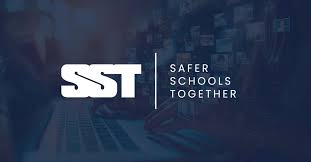WARNING
Your online activity may be tracked. To exit this website quickly, click this text immediately. If you are afraid your internet and/or computer usage might be monitored, please consider using a computer outside of your home.
Cybersafety, Stalking, & Online Harassment
As our use of digital technology and social media increases, our risk of someone, even complete a stranger, engaging in online harassment or stalking increases, as well. This resource guide provides information to assist you in learning about cybersafety and strategies for protecting yourself from online stalking and harassment, sometimes called "sexploitation." If you have concerns, questions, or need help enacting prevention and response strategies for responding to stalking and online harassment, please contact the Office of Equity.

Immediate Danger
If you are in imminent danger, contact law enforcement by calling 911 immediately. We acknowledge that law enforcement may not be the right option for everyone, so a victim advocate or violence prevention organization may be better suited to meet your needs.
Types of Stalking and Online Harassment

Negative Health Impact of Stalking and Online Harassment
Due to the invasive and threatening nature of stalking behavior and subsequent online harassment, individuals who experience these behaviors report significant changes to their physical and mental health, including: withdrawal from social activities and friend groups; increased likelihood of comorbid anxiety and depression; increased likelihood of posttraumatic stress disorder (PTSD); decrease in work output and performance; increased likelihood that the individual may quit their job altogether; increased risk of using substances as a coping mechanism; increased likelihood of anxiety attacks; increased risk of self-harm or suicide.
Stevens, F., Nurse, J. R. C., Arief, B. (2021). Cyber Stalking, Cyber Harassment, and Adult Mental Health: A Systematic Review. Cyberpsychology Behavior Social Network, 24(6), 367-376. Doi: 10.1089/cyber.2020.0253.
Online Sexploitation, also known as sextortion, is the action of contacting an individual through an online platform, using manipulation, coercion, or threats to get an individual to provide sexually explicit images or videos, and then using these materials to blackmail the individual for money or further exploitation if they don’t comply with their demands.
Examples of common cases of potential sexploitation can include:
Scenario One: “A former partner threatens their ex-partner with forwarding explicit photos to their family members unless they take them back as their romantic partner.
Scenario Two: An online stranger emails someone with an external link to a Google Drive folder containing altered images of the individual’s likeness. This includes ‘deepfake’ videos of the individual committing sexual acts that the person had never committed. The stranger is threatening to post these videos on Facebook unless the individual pays an exorbitant fee.”
Online sexploitation/sextortion has been an increasingly area of concern for law enforcement agencies (LEAs) as this type of crime has seen an increase among young males ages 14 – 17 years old. For example, according to the Department of Homeland Security in fiscal year 2022 the department had received over 3000 sextortion tips. In response, the Department has published additional warning signs, or 'red flags', including:
- Developing a false rapport with the victim.
- Secretly recording explicit videos and messages during chats.
- Hacking accounts to steal sexual images.
- Threatening to commit suicide if the victim refuses to send images.
- Visiting public social media profiles to find out more about the victim, including accessing the victim’s friend list and searching for other personal information that may harm their victim’s reputation.
The term “hostile environment” is commonly used in workplace and academic settings and refers to unwelcome, severe, and/or pervasive that limits or denies a person’s ability from participating in their employment/educational activities. At the University, this includes online actions done on CU work applications and devices such as Microsoft 365, Canvas, and other platforms. Actions that contribute to a hostile environment can either be harmful due to it being sexual in nature and/or discriminatory on the basis of a protected class. Examples of online actions that may constitute as online harassment and/or create a hostile learning or working environment include:
- A Microsoft Teams group chat of employees sharing explicit images of one of their coworkers.
- An employee repeatedly contacts a student through their work email requesting to go on a date, with conditions that if the student refuses, the student will not be able to enroll in classes next semester.
- An employee uses an official CU social media account to monitor their ex-fiancée who has repeatedly blocked the employee from viewing their personal life.
With the evolving field of machine-learning technology and artificial intelligence its capacity to cause harm by mimicking a person’s likeness has become a reality. There is an increasing concern regarding the use of “deepfakes”, which are defined as artificial images or videos that appear authentic but have been manipulated by artificial intelligence (AI) to make someone look or sound like another person. Deepfakes are trained on vast amounts of data to identify and reconstruct patterns, often faces or voices. Using an individual’s personal data, including social media posts, photos, and videos, AI algorithms can mimic an individual’s likeness in more complex situations, and as such, have a greater capacity for abuse.
Here are some suggestions for spotting deepfakes:
- Look for inconsistencies. Deepfakes can have subtle imperfections, such as unnatural facial expressions, off-key lip movements, or discrepancies in lighting or shadows.
- Pay attention to resolution. Face-swapping (replacing a person's face with another person's face) can create resolution inconsistencies that AI can detect.
- Use deepfake detection tools. AI models are being developed to identify deepfakes based on various visual and auditory cues.
- Verify the source. Be skeptical of content that seems too good to be true and cross-reference information from multiple sources.
According to WomensLaw, a project of the National Network to End Domestic Violence, "Nonconsensual intimate image sharing, abbreviated NCII, is sometimes referred to as nonconsensual dissemination of images, nonconsensual pornography, or by the slang phrase “revenge porn.”" Note: Advocacy groups abstain from using the phrase "revenge porn" because it suggests that a scorned partner is acting on a motivation to take revenge on the individual.
However, an abuser may share or threaten sharing images to:
- Gain financial or legal power over them.
- Harass or intimidate the individual from reporting them to law enforcement.
- Use the individual's social and community support against them.
An individual could be negatively affected by stalking from another person even if the two have never met before. An individual can also be stalked using third parties (e.g., coworkers, friends, family, etc.) or discreet software (e.g., IP trackers).
In the State of Colorado, actions that can be considered stalking and found to be a credible threat is considered a felony.
How to Protect Yourself Online
Surfing the online web, using social media accounts, and engaging with folks online, it is almost impossible to avoid creating a digital footprint. Digital footprint is traceable data of a person's online activity. There are a few things you can do to monitor your online activity and protect your personal information.
Search Yourself Online Regularly
- PeopleConnect Suppression Center - PeopleConnect manages and displays personal information on websites owned by them like TruthFinder, InstantCheckMate, USSearch, etc. You can go to their website to submit a suppression request to have your information removed from these common sites.
- Reaching Out Directly to Pages that Display Your Information - You can reach out to websites directly and have them take down your personal information.
- Removing Personal Information from Google Search- Google Search has different features to report any personal information that may appear when you search yourself. There are a few actions you can take on your end to limit or remove certain results. While this does not delete the information from the original source, it prevents it from being searchable.
Strengthening Privacy Settings on Social Media Accounts
Depending on the social media platform, you should consider factors of what information you are wanting to display and who can view this information. You may want to ask yourself:
- Who can follow me?
- Who can view my profile?
- Do I want to share my location? If so, who can see?
- Who can share my posts?
- Who can message me?
- Other questions, depending on the platform
Utilize Secure Services
There are services that may be worth looking into to protect your information while you are online, such as:
- VPN (CU Denver | Anschutz employees are highly encouraged to utilize their respective campus' virtual private network [VPN] service as a safety precaution. Please click on one of the following links to utilize this resource. CU Denver Remote Access VPN. CU Anschutz Medical Campus VPN.)
- Password Management
- Data Broker Management Services
Being Digitally Responsible
In this new age of online dating and engagement, you may be inclined to send explicit photos. It is completely up to you what you feel comfortable and not comfortable doing. There are a few things you may want to keep in mind:
- Communicate boundaries around sexting. You do not have to engage in sexting if you do not want to. If you do, it can be helpful to have a conversation about who is and is not allowed to see explicit materials, where they are stored, what to do should a relationship end, etc.
- Make sure you have consent to send or receive explicit material and vice versa. Remember a "YES!" versus a "yea...." can have different tones or meanings. There is nothing wrong with checking with someone to make sure consent is clearly communicated.
- Know who you are talking to. While it may be exciting to meet and talk to new people, there are individuals who may pose as someone else online.
- If sending an explicit image of yourself, omit any identifying information like location, face, distinct tattoos, or birthmarks, etc.
In general, it is advisable to not engage with a potential stalker. You may feel compelled to confront the stalker, but this action may increase the likelihood of harm and strengthen potential ways they have to contact you. It is understood that, in most instances of stalking or online harassment, the best course of action is to ignore the individual whilst taking appropriate steps maintaining personal safety and autonomy/empowerment, which for some could involve taking appropriate legal action. You are the expert on your situation, and we highly encourage you to explore all available options to make the most informed decision on what to do next.
“But wait, what if my stalker confronts me is someone I know at the University? What if they are a fellow student, a fellow coworker, or even a supervisor?”
It is understandable why we may hesitate to address behaviors that we understand to be stalking if the alleged stalker is someone we personally know. Regardless of who is enacting the harm, it is crucial to take immediate action to stop the behavior and prevent it from continuing to happen to you or anyone else. If you feel that a CU community member you personally know is stalking you, be firm and clear they leave you alone. You do not have to provide a detailed reason or converse with the stalker about your rationale.
It is important to record all details regarding any outreach attempts/incidents with the stalker i.e., what was said, date/time, how they contacted you. Additionally, it's important to document all known details of the stalker, which we will cover later. Lastly, we encourage you to report the behavior to the Office of Equity and/or a local law enforcement agency so the harm can be appropriately addressed.
Creating a safety plan checklist is key in identifying what immediate actions you can take in protecting your personal safety, what additional steps you need to work towards, and pinpointing potential areas where additional support would be helpful. A safety plan could include:
- Contact info of trusted family and friends.
- Creating an easy-to-access journal or digital folder of stalking incidents and/or contacts.
- University police escort.
- High-risk areas to avoid or request a University Police escort.
- Local resources and shelters (e.g., domestic violence advocates, safe shelters). You can visit our page for Sexual Misconduct Resources to find a list of local resources/shelters.
- Safety codes in case your stalker is nearby that your trusted contacts would understand.
If you are not in danger, but want to create a safety plan you can reach out to the Office of Equity for assistance. Both the Phoenix Center at Auraria (CU Denver) or the Blue Bench (CU Anschutz) are also organizations that can assist impacted individuals with safety planning and other related resources.
Departments at the University, like the Office of Equity and Human Resources, can assist with interim safety and support measures like issuing no-contact orders/campus exclusions, and/or assisting individuals in connecting with law enforcement agencies to aid in the resolution of online harassment/stalking concerns and incidents. Recorded/documented material that is helpful to provide University and/or law enforcement agencies include the following:
- The Five W’s of every and all incidents involving the stalker (who, what, where, when, why [potential reason]).
- Potential witnesses and their contact information.
- Screenshots of social medial posts, conversations, and comments.
- Video of concerning behavior.
- Gifts or items procured from the stalker.
- Who you have reported this information to prior.
Available Reporting Options
Behavior that may be considered stalking or online harassment is reportable to the Office of Equity. If you are interested in reporting to the Office of Equity and learning how their team may be able to support you, click here to make a report. Submit a Report.
Stalking is a potential crime that the University of Colorado Denver and Anschutz Medical Campus may investigate under the Clery Act through its designated law enforcement agency. Click here if you're interested in making a Campus Security Authority (CSA) Report
Submit a Campus Security Authority Report.
Seeking Support.
Regardless of whether or not you report to a campus authority, we highly encourage you to find and access support from a variety of advocacy resources and organizations. Click here for a comprehensive list at the local, state, and national level supporting individuals experiencing stalking and online harassment.
Depending on the type of stalking or online harassment that has taken place, you may also be interested in submitting a potential complaint to a Federal Agency. The University of Colorado and Office of Equity does not prohibit individuals affected by stalking, harassment, or any concerning behavior from contacting outside entities to prevent harm.
- Colorado Office of Attorney General - File a Complaint
(Potential cases of fraud, breaches in data privacy, etc.)
(Potential cases of online stalking, harassment, sextortion, financial sexploitation, etc.)
(Potential cases of child exploitation, cyberbullying, cyber extortion, identity theft, etc.)
The Office of Equity acknowledges that reporting to law enforcement may not meet the needs of those affected by stalking or online harassment.
Social Media Resources
Most social media platforms have policies against online stalking, bullying and harassment as a part of their terms and conditions all users must abide by. Click the following links below to take steps and report stalking or online harassment that you may have experienced on a social media platform. In addition to reporting harmful behavior, found below are a variety of external resources to assist you in securing your online profile.

A resource from the National Center For Missing & Exploited Children, Take It Down is a free service that can help you remove or stop the online sharing of nude, partially nude, or sexually explicit images or videos taken of you when you were under 18 years old. You can remain anonymous while using the service and you won’t have to send your images or videos to anyone. Take It Down will work on public or unencrypted online platforms that have agreed to participate.

Stop Non-Consensual Intimate Image Abuse
StopNCII.org is a project operated by the Revenge Porn Helpline. It introduces innovative technology that is used by tech companies to help people by preventing sharing of specific intimate images. You can submit images and/or videos to StopNCII.org and will work with participating companies to remove any matches of the content provided.

EndTAB, or End Tech-Enabled Abuse, is an organization founded by victim service providers with the goal of reducing tech-enabled abuse by providing accessible resources. EndTAB achieves this through trainings, community talks, and individual webinars.

Safer Schools Together (SST) equipes students and professtionals to stay ahead in the rapidly evolving digital landscape with comprehensive digital/behavioral training and expert-led sessions that help institutions foster secure environments. SST also offers an online resource kit that cover helpful topic like Raising Digital Responsible Youth and Interpreting Emoji's Guide.
Take It Down Act
On May 19, 2025 the bipartisan "Take It Down Act" has been signed into law to enact strict penalties for distributing non-consensual intimate imagery, "deepfakes", and requiring online platforms to remove the prohibited content. Although many states already prohibit the distribution of said content, this initiative at the federal level is considered a first of its kind. To learn more, please follow the links below:
- Rape, Abuse & Incest National Network - Take It Down Act
- S. 146 - TAKE IT DOWN Act 119th Congress (2025-2026) [Official Bill Summary]



















